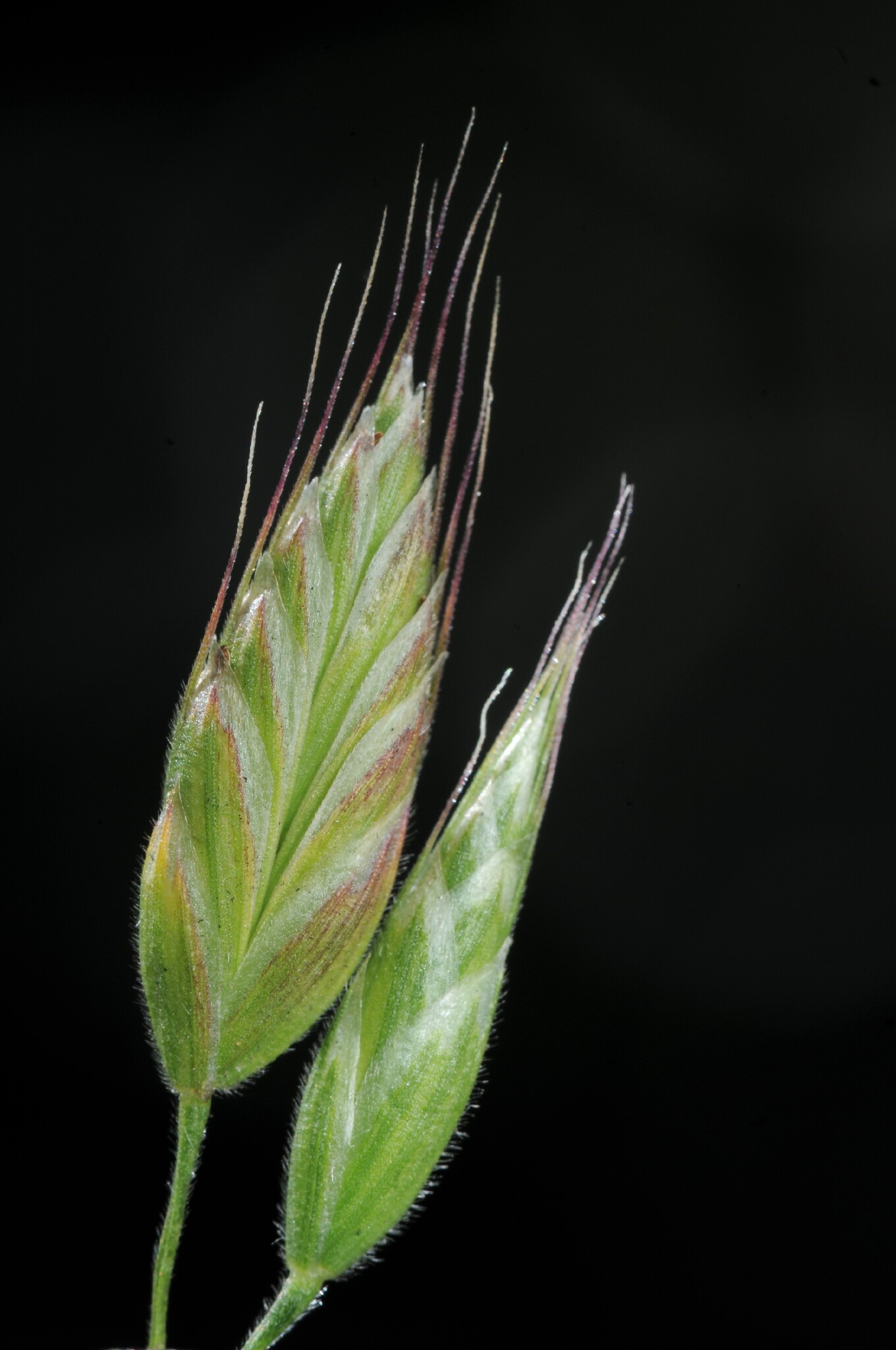
Greek bromos – a kind of oat.
Tufted sometimes rhizomatous annuals or perennials. Leaves with sheathes closed at first, the blades rolled in bud. Ligule membranous. Inflorescence a compact or loose panicle of large spikelets. Spikelets several- to many-flowered, sometimes laterally flattened, disarticulating above the glumes and between the florets. Glumes 2, unequal, awnless, lower glume 1-5(-7) nerved, upper glume 3-7(-9) nerved. Lemmas 5-9 nerved and usually 2-toothed at the tip, the awn, when present, arising from behind the teeth or dorsally near the tip. Palea present, awnless, 2-nerved, 2-keeled. The seed usually adheres to the palea and is enclosed within the lemma.
In cultivated ground bromes are encountered mostly as wayside grasses but occasionally in gardens.
Seed.
Cultivated for fodder with some economically important native grass species and grain crop species.
Leaf sheaths with margins united for most of their length; ovary hairy with a conspicuous apical appendage. Sometimes confused with Festuca esp. F. gigantea and F. arundinacea, but they have ovaries without conspicuous apical appendages.
About 150 species, mostly from the temperate Northern Hemisphere. Australia has 1 native species and about 25 naturalised species.
Wagnon (1952), Smith (1970).
Source: (2005). Poaceae. In: . Horticultural Flora of South-eastern Australia. Volume 5. Flowering plants. Monocotyledons. The identification of garden and cultivated plants. University of New South Wales Press.
